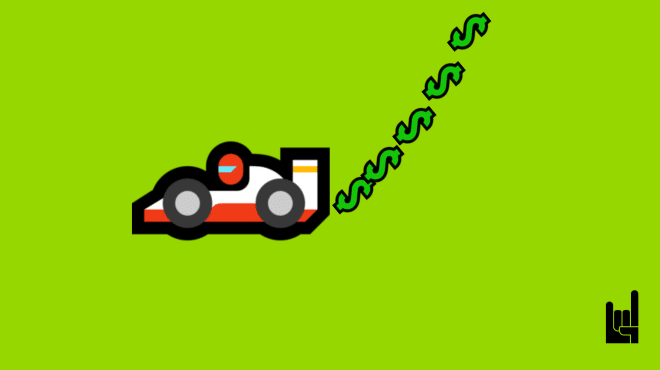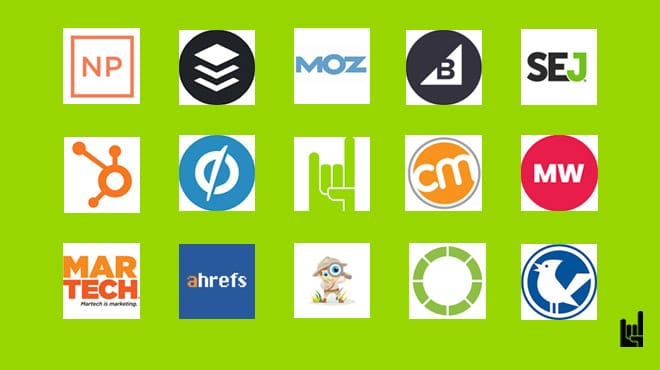Let there be, growth
A revolution takes place in the World Wide Web, and that’s no lie. Startup companies from all over the globe provide products and services shaped on people’s needs, or shaped to be needed. And this revolution inevitably impacts on how businesses operate and grow. This is the reason why traditional marketers started to lose their fame and those who know how to code and understand data analysis are the new sexy. Despite these guys are out there for a while, it was back in 2010, when they got named by Sean Ellis and the Growth Hacking Marketing started to emerge.
What is Growth Hacking?
Growth hacking is a marketing technique developed by technology startups which uses creativity, analytical thinking, and social metrics to sell products and gain exposure.
Personally, I am a huge bolsterer of what Aaron Ginn pointed out for Growth Hacking: “Growth Hacking is a mindset, not a toolkit”. It’s all about the way you conceive change and how you adapt to it. But to make it clearer to you, Growth Hacking is pure Marketing but with a different approach; just like what startups are opposed to established businesses.
Now let’s break down the term. It consists of two words: “Growth” and “Hacking” The first, is an easy one, and refers to expansion (in our case, building an audience for our product). The second, is kind of tricky word as it is, often associated with illegal activities. In order to clear this out for you, I’ll collocate the three types of hacking:
- Software Hacking: It refers to software engineering, and although growth hacking isn’t all about programming, it uses technology based solutions to achieve its primary goal; growth. It’s not essential for a growth hacker to be a programmer, but being able to comprehend programming is considered to be a great asset.
- Illegal Hacking: This kind of hacking is about unauthorized access to a system or breaking into something without permission. As a growth hacker, you will not hack in the illegal sense of the word, but you will try pushing the boundaries of what is expected. The only resemblance between Illegal Hacking and Growth Hacking is their mutual interest in system weaknesses which are exploited in different ways by the two groups.
- Resourceful Hacking: Hacking is sometimes used to refer to clever, original or inventive way of acting. Hackers will use whatever is at their backlog to create a solution that might have been disregarded by others. The same attitude is found in growth hacking because you, as a Growth Hacker, are forced to be ingenious if you are going to achieve growth.
So, let me recapitulate for you:
“Growth Hacking is the mindset behind finding clever, original or inventive ways in order to plant growth on a product or service, through the use of data, technology and sometimes a system’s weakness exploitation.”
Who’s a Growth Hacker?
Growth hacking revolves around the concept of growth. So a growth hacker’s initiatives and strategies rely on hopes for it. Ignoring marketing rules and boundaries, he focuses on building rapidly a sustainable audience for a product, or a service. People tend to think that high budget marketing campaigns truly matter, while everything is simply based on the concept of growth. As Noah Kagan, stated: “Ads are temporary. You’re not buying attention, you rent it. When you stop paying the rent, attention is gone.”
I don’t claim that traditional marketers are of no use anymore. They care about growth too, but not to the same extent that true growth people do. A marketer’s work is not vital for a startup that doesn’t have potential customers to market its product. The brand needs customers! Customers have to be intrigued by the product to try it (or ideally, to wait until they can try it). It doesn’t take a master’s degree in physics or a PhD in quantum mechanics to realize that if you want to sell something, you have to inform buyers that it’s for sale. Most people think, that you “buy” success by running expensive marketing campaigns, and if you don’t have the resources to do so, then there is no way to make it. Actually, there is a way. And I honestly believe that there is always a way, as long as you are committed to innovation and the use of your creativity; because that’s what growth hacking does: It pores over desire for innovation and inexhaustible creativity. If you think that you don’t have what it takes, I advise you to think again. Everyone is creative (in his own, special, way). And everyone seeks for innovation, as it’s kind of instinctive for improving your quality of life. So, in case you were not an innovating person, you would be sitting on your couch, watching stupid TV shows instead of searching your way here.
“So, who is a growth hacker?”
You are; definitely. I know you fit the profile, just because you’ve read all the way till here. For the same reason, I exclusively crafted this article to be your starter’s guide in what we call, growth hacking marketing and how it can affect your business. I’m sure that your thinking on success will be revised.
Do I need Growth Hacking?
Consider this. What would Facebook be without its 1.23 billion monthly users? The answer is easy; NOTHING. It’s neither the idea, nor the hours that you spend working on it and certainly not the money that truly matter. It’s the people who can’t live without what your products gives them (a.k.a traction). Without them, you have nothing. And I hope that you just got your answer. But in any case, if you have enough budget to spend on poorly designed and expensive campaigns or conquer the TV commercials and billboards, then yes you can live a bit without hacking your growth. Do you?
The #1 most important thing in Growth Hacking: Product-Market Fit
The usage of the Internet introduced us into a new world of product development. Suddenly, bits and bytes turned into profitable products, changing dramatically the marketing field. People with a strong understanding on how people flow online, and the ability to maximize the potential of a product, manage to create products that people can’t live without. They know that it’s their duty to transform this potentiality into reality. So, how do they do it? By achieving Product-Market Fit.
Start with a product that people actually need or want
Strip down the idea, to its core. Is it valuable? If not, then face it! Entering a billion dollar industry or not, depends on a brilliant idea and great effort from the people that do the nip tuck. If your product is not good, then change it until it’s primed to blow people’s minds. A great example of a brilliant idea is Hotmail.
Hotmail was the first free web mail provider (yes, there was a time that people had to pay for an email). This product was revolutionary, considering it was the nineties. The problem Sabeer Bhatia and Jack Smith (Hotmail’s founders) had to face, was that nobody knew about how great their product was. When they discussed about the product with Tim Draper, although he thought that their idea was great, he shared the very same speculation about it: “How will you make it to go viral?” The team’s first thought was to follow the traditional marketing pattern; putting it up on billboards and radio ads, but that was a very expensive approach for a free product. Draper suggested that they should send an email to everyone on the internet, but as we know, spam doesn’t work (and neither worked in 1996 so well). Then Draper came up with what was meant to be one of the first growth hacking appliances in the history of the Internet: “Put ‘P.S. I love you. Get your free email at Hotmail’ at the bottom of every email, sent by a hotmail user”. The link directed the reader back to the Hotmail homepage. This particular recommendation changed everything! In less than a year, Hotmail managed to host more than 12 million email accounts. This is one of the reasons that most marketers put a PS at the end of their email with a link to something valuable they offer.
Adopt to what people like about your product
Adopt to what people love and get rid of anything unnecessary. Stick to what your customers seem to like the most and get the best out of it. See Instagram, for example:
When it started, it was called Burbn. It was a location-based social media network that had an optional photo feature. The application attracted a group of users, but that wasn’t enough. They needed to find what feature made their product unique and interesting. After analyzing their data, they found out that most of their users flocked to the photo and filter feature. After retooling the service, Burbn has been reintroduced to the market as Instagram; a mobile app for posting photos with filters, resulting to 100,000 users within the first week of the relaunch. – Product Market Fit, at its best. – The rest is history. Instagram, after 18 months, was sold for 1.8 billion dollars to Facebook.
You may wonder now why I insist so much on product-market fit and what is the connection with growth hacking? Because, even if you have the best growth hacker in the world, if your product isn’t sticky, then you won’t grow. The important thing here is to understand that if you adopt the growth hacking mindset and expertise, you will be able to reach faster to product-market fit and find out the perfect timing for pushing the growth pedal.
Now, I assure you one thing: Neither product-market fit, nor growth don’t happen magically. It’s your job to make it so.
The Growth Hacking approach
I’m sure that you’ve already started to think as a growth hacker. To help you even more, for every goal you set for your product and marketing, follow these 5 simple iterative steps:
- Measure: Measure everything. Even if you’re not ready yet to understand or analyze the data you gather, it doesn’t matter. It’s really important to have them there when you’ll need them.
- Analyze: Analyze what matters and see what works and what’s not. Throw away any vanity metrics and keep only the actionable ones. Focus on one metric at a time (maximum two).
- Test: Based on your data analysis, change your product, website, landing page, email campaign etc. and see what happens. Keep in mind that bigger changes cause bigger impact. Don’t be too risky but be innovative. In a later post I will show you how you can mitigate this risk. Try to keep the testing period 1-2 weeks time.
- Compare: Compare your new data with previous measurements. This is the only way to find out the impact of your change.
- Refine: Based on the result, tweak your change.
- Repeat: Repeat the same process till you reach your goal.
Concluding, I have a piece of advice for you. Practice! Growth hacking is a skill set that can be learned, but reading about it, is a totally different thing than doing it. Go out and find a small project to work on. Besides, there’s no better way to obtain knowledge than learning from your own living; your personal wins and defeats. This post is the first of an article series which I hope will point you to the right direction, and give you a head start to become a rock star marketer. In case you have any questions, feel free to leave a comment below. I’ll be more than happy to discuss and give you all the answers you need.
Cheers 🙂

Theodore has 20 years of experience running successful and profitable software products. In his free time, he coaches and consults startups. His career includes managerial posts for companies in the UK and abroad, and he has significant skills in intrapreneurship and entrepreneurship.



